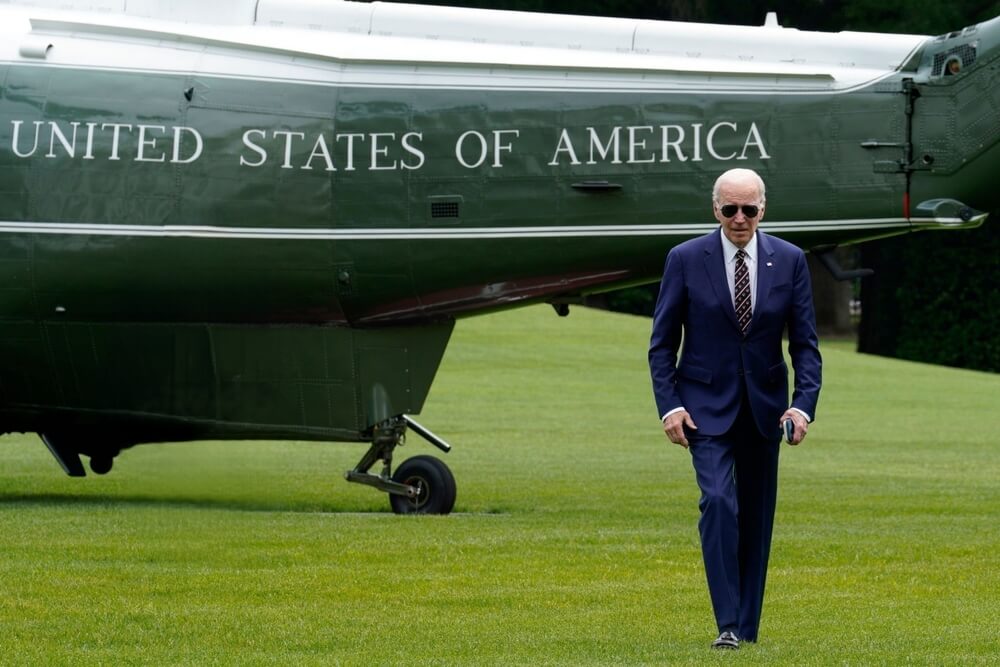The G7 members are on the verge of deciding to use Russian funds frozen at Western financial institutions to support Ukraine. Should the G7 summit in Italy next week make such a decision, it would represent one of the boldest and most efficient forms of support for Ukrainian defence since the onset of Russian aggression.
The partners within the organisation of the seven most industrially developed democracies require a decision like this in order to reaffirm the occasionally questioned internal cohesion in support of Ukraine.
If the G7 leaders decide to use the interest from the frozen Russian funds to support Ukraine, it will be a decision with a lot of symbolic power because it means that the aggressor will not be able to avoid paying compensation, even if its invasion continues.
Moreover, the fact that Russia is partially financing the defence against its aggression will undoubtedly deal a serious blow to the country.
The G7 summit in Apulia, southern Italy, from June 13 to 15, could complete the long road through the minefield of legal and political obstacles in connection with the use of Russian funds for aid to Ukraine.
Ministers paved the way
The G7 finance ministers partially paved the way for such a decision in May, although they did not present a concrete proposal for a meeting of their leaders. "It was a good signal that we are moving in the right direction," said then Ukrainian Finance Minister Sergii Marchenko, who attended the G7 meeting in Stresa, Italy.
The Europeans, whose financial institutions hold two-thirds of the frozen Russian fund of approximately €300 billion, will have to make the final decision.
When they accepted the use of Russian funds for Ukraine's needs last February in response to the European Council's decision, they partially adopted the path of utilising (they frequently avoid the word seize) Russian funds, but only under the condition that the capital remain unaffected.
The American request to reach all frozen Russian funds was also part of the response to internal pressure from Republicans
This was an important response to months of pressure from the United States to pay the costs of Ukrainian defence and reconstruction with frozen Russian funds.
The American request to reach all frozen Russian funds was also part of the response to internal pressure from Republicans, who had refused for months to pass a major new financial package in Congress to support Kyiv.
Ambitious options
The "creative" solution that the partners have been searching for for months is on its way to taking shape next week with the G7 decision, although it will not be entirely free of risks and criticism.
The Europeans' position was to simply take the interest from the frozen Russian assets and transfer it to Ukraine for its defence. This amounts to around €2 to €3 billion per year.
Given that Russia cannot rely on profits from its financial assets as a result of the sanctions, this strategy is primarily based on the legal protection of property, which is unaffected by this action.
The majority of the funds (90%) would go toward purchasing weapons, with the remaining 10% going toward infrastructure repairs
But the US is demanding more, and Treasury Secretary Janet Yellen urged her colleagues at a meeting in Italy to take "ambitious options" when it comes to divesting funds from Russian assets.
According to Washington, this "ambitious option" is to take out a loan from the annual interest that would be paid to Kyiv, which is a much larger amount—about $50 billion.
This would be significant financial support for Ukraine, and if a decision is taken next week, the money could flow to Kyiv as early as July.
The majority of the funds (90%) would go toward purchasing weapons, with the remaining 10% going toward infrastructure repairs, particularly those related to the supply of electricity and heating.
The point of no return
The European members of the G7 have themselves passed the point of no return. There has been a long debate about whether or not they should reach for billions in Russian bonds and foreign exchange reserves.
They will strive to minimise domestic criticism by implementing technical adjustments, particularly in relation to the legal aspects of this decision, but also because of the political risk associated with the potential deterioration of the EU's reputation as a defender of property rights where foreign states like to keep their funds.
 Having recently succeeded in unblocking a large financial package for Ukraine totalling $61 billion in the US Congress, this will be another massive piece of support for Kyiv, which is an important part of Biden's policy but also of the election campaign
Having recently succeeded in unblocking a large financial package for Ukraine totalling $61 billion in the US Congress, this will be another massive piece of support for Kyiv, which is an important part of Biden's policy but also of the election campaign
Of course, there is also the question of guarantees for the repayment of a possible loan for Ukraine, which will certainly be largely at the expense of European creditors, given that most of Russia's money is in Europe and denominated in euros.
US President Joe Biden will certainly have a vested interest in making such a decision at the Italian G7 summit. Having recently succeeded in unblocking a large financial package for Ukraine totalling $61 billion in the US Congress, this will be another massive piece of support for Kyiv, which is an important part of his policy but also of the election campaign.
Next week in Italy, the European leaders will make decisions without the “burden” of political caution, as they will have already finalised the important elections to the European Parliament over the weekend.
For all of them, the authorisation to use profits from Russian funds for aid to Ukraine will be an encouraging prelude to the NATO summit in Washington in July, at which new decisions on concrete military support for Ukraine are to be taken.